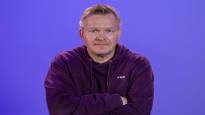In Turku, they have not started to get greedy, but have trusted in Finnish, exceptional athletics culture. It has been a winning recipe, writes Pekka Holopainen.
Pekka Holopainen Sports journalist
The 2013 edition of the Exxon Mobil Bislett Games, more commonly known as the Oslo Diamond League, was not a classic event in the history of athletics, so to speak.
In a cold and rainy evening, the result level was lower than expected. The general impression was that the stadium lacked a lot of quality athletes, with whom the promoter Steiner Hoen would normally have entered into a competition agreement.
This time it wasn’t just an impression, but a cold fact for the weather.
The reason was the athlete, whom the event management presented the night before at Oslo City Hall’s traditional Strawberry Festival like a crown jewel.
Having already dominated the sprint scene for five years at the time – and will continue to do so for another three – Usain Bolt certainly aroused a lot of interest, but he took a lot even in the race to compensate for his impressive 19.79 seconds clocking in 200 meters.
A third of the budget
Namely, about a third of the entire athlete budget of that event.
In Finnish eyes, it was not a winning investment, because it was deliberately made at the expense of the level of one of the finest athletics events in the world.
While Oslo has always competed in the highest category since the 1960s, Turku has wisely abandoned the obsession with the Diamond League status of Paavo Nurme’s games.
The World Athletics Continental Tour, or the so-called second level, with its athlete budgets of around half a million euros, is the right category for the jewel of Finnish traditional sports on Tuesday of this week as well.
Even though Finland organizes athletics events of exceptionally high quality in international comparison, there has been no doubt about the number one for a long time.
The Paavo Nurmi Games are a great event in Finland and for Finns.
There are also completely logical reasons why this template would probably only work in Turku, Finland. And you don’t need to anywhere else either.
High Civilization
The Paavo Nurme Games (PNG) has been running for a decade Jari Salonen and his adjutants have dared to trust that the athletics education of Finns is still of a very high standard, even with changing interests and the world.
Because of this, all eggs have never been put in one basket.
Salonen would never spend a fourth or even a third of PNG’s athlete budget on one athlete, no matter what kind – if and because the price would be to sacrifice the evening’s versatility and value.
Even the absolute superstars are talked about every year by the competition organization, but with the current budget they remain just talk. The principle is that no one is paid more than 15 percent of the total budget.
This was learned the hard way in 2017, when the stick legend Renaud Lavillenie cleared about a fifth of the pot and, according to the organizers, clearly took out more than brought in. The experiment really remained an experiment, unlike, say, the Helsinki Esplanadi’s runway-wide bike lanes.
The Finnish athletics spectator can still appreciate everything that happens on the field. It knows the athletes, the sports, the history and the nuances. The global status of athletics is not nearly the same as it was 30 years ago, so this Finnish feature is even strange.
Turku disease
Athletes respond to love with love. A very unique reciprocity is born, that positive Turku disease. Thomas Röhler, Daniel Ståhl, Johannes Vetter, Sandra Perkovic, Max Burgin, Justin Gatlin and dozens of other foreign visitors can confirm this. Not to mention domestic profile athletes.
The new arrival of PNG in the past ten years has been a stroke of luck for Finnish general and elite sports.
It has not received any luck from Säidenhaltija.
Tuning the sports park’s stadium to PNG condition costs the organizer around 200,000 euros every year. At the Olympic Stadium, these things would come on behalf of the house, but this event does not belong to Helsinki.
Pekka Holopainen
The author is a columnist based in Pori and the only sports reporter who has been selected as Journalist of the Year in Finland.
What thoughts did the story evoke? You can discuss the topic on 13.6. until 11 p.m.
